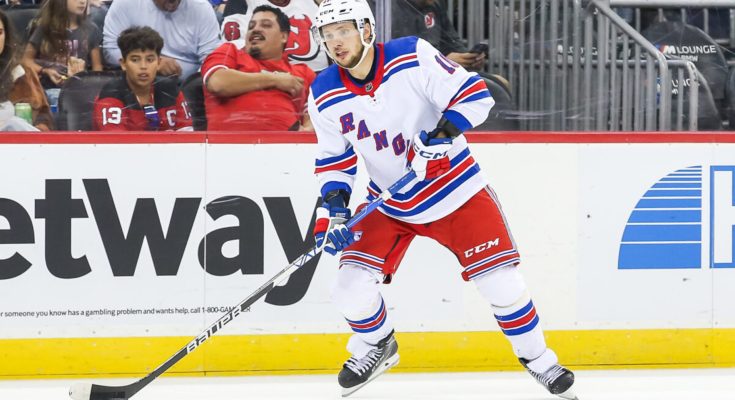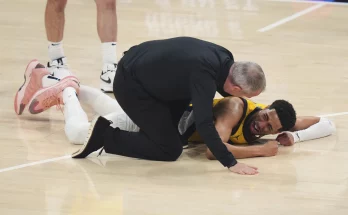Artemi Panarin has been the heartbeat of the New York Rangers since arriving in Manhattan during the 2019 offseason. His dazzling offensive ability, dynamic skating, and innate playmaking have made him one of the most electrifying players on Broadway in recent memory. The “Breadman” hasn’t just lived up to the hype—he’s often exceeded it. With several 90+ point seasons under his belt, Panarin has helped turn the Rangers from a rebuilding club into a perennial playoff contender. However, as he enters the later years of his current contract, talk has already begun about a potential extension to keep the star winger in New York for years to come. But for all that Panarin has done for the franchise, the Rangers would be wise to resist the urge to hand him a long-term extension too quickly. There are compelling reasons—both practical and strategic—why the team must exercise caution before making such a major commitment.
To be clear, this is not a call to undervalue what Panarin brings to the ice. At 32 years old, he is still performing at an elite level. This past season, Panarin posted arguably his best statistical campaign since joining the Rangers, once again carrying the offense during critical stretches. His vision in the offensive zone remains elite, his shot deceptive and effective, and his ability to control pace unmatched by most of his peers. For a team built on a blend of youth and veteran presence, Panarin has served as a model of consistency in regular-season play. But that is precisely where the first crack in the logic of a premature extension begins to show. Regular-season brilliance is not the same as postseason impact, and Panarin’s playoff track record raises legitimate concerns about long-term investment.
Time and again, when the lights shine the brightest in the Stanley Cup Playoffs, Panarin has failed to rise to the occasion. In multiple postseasons with the Rangers, he’s struggled to replicate his regular-season dominance. While a few clutch moments—like his Game 7 overtime winner against the Penguins in 2022—stand out, they are exceptions rather than the rule. Panarin has often looked out of sync during the playoffs, appearing hesitant with the puck and less effective in traffic-heavy, physical environments. Whether it’s due to the intensity of playoff checking or the tighter defensive schemes employed by postseason opponents, Panarin has not consistently delivered when the Rangers have needed him most. Investing heavily in a player whose impact shrinks when the stakes are highest carries risk, especially in a salary-cap era where every dollar matters.
Moreover, Panarin’s age is an undeniable factor. While he is still performing at a high level, he is also heading toward his mid-30s. NHL history is littered with examples of skilled wingers whose effectiveness began to wane around this time, particularly when speed and agility were central to their game. Panarin’s style depends heavily on lateral movement, quick acceleration, and rapid decision-making. As he ages, even a slight decline in any of those attributes could dramatically affect his productivity. A long-term extension—especially one that takes him into his late 30s—could turn into a financial albatross. It’s a lesson teams like the Chicago Blackhawks (with aging stars on big deals) and the San Jose Sharks (see Brent Burns and Erik Karlsson) have learned the hard way. The Rangers cannot afford to be sentimental or short-sighted with their cap space, particularly with so many young talents entering or approaching their prime.
Another major consideration is the construction of the roster going forward. The Rangers are in a transitional period in some ways. While they are still very much a contender in the Eastern Conference, the rise of younger core players like Alexis Lafrenière, K’Andre Miller, Braden Schneider, and Filip Chytil suggests the organization should be planning its financial future with an eye on the next wave. Lafrenière, in particular, made significant strides last season and may be poised for an offensive breakout in the near future. If his development continues as hoped, the Rangers will need the cap flexibility to sign him to a meaningful extension. The same goes for Miller, a top-four defenseman who is becoming increasingly valuable on the blue line. Handing a massive, long-term deal to Panarin now could hinder the team’s ability to retain and build around these younger players later.
It’s also worth considering the shifting landscape of the NHL itself. In today’s game, teams that succeed consistently tend to be those that manage their salary cap with ruthless precision. The Tampa Bay Lightning and Colorado Avalanche have mastered this balance in recent years, making difficult decisions when necessary to preserve cap flexibility and long-term competitiveness. Locking up aging veterans on name value or past performance often leads to decline, stagnation, and eventual rebuilds. The Rangers, with one of the league’s largest markets and highest expectations, cannot afford to regress into mediocrity due to poor cap management. That starts with avoiding emotional decisions when it comes to contract extensions.
Panarin’s current deal still has two years remaining. This gives the Rangers ample time to assess his performance, durability, and fit within the team’s evolving identity before deciding on an extension. Rushing into negotiations now would eliminate the leverage the team currently holds and could lead to overpaying for what Panarin has done in the past rather than what he can be expected to deliver in the future. Smart franchises use every available data point before committing long-term to aging stars, especially in a league where the margin between contender and pretender can be razor-thin.
There’s also the intangible factor of team identity. Chris Drury and head coach Peter Laviolette have begun to mold the Rangers into a more defensively-responsible, physically-engaged team—especially in playoff settings. While Panarin’s skillset is a huge asset, it doesn’t necessarily align with that grit-and-grind identity. In fact, there were moments this past postseason where Laviolette appeared to limit Panarin’s ice time or shift usage in order to better match up with opponents’ physical lines. If the coaching staff feels that Panarin is not the best fit for the style they’re cultivating, that should absolutely factor into any long-term decision. Sentimentality cannot override on-ice practicality.
None of this is to say the Rangers should move on from Panarin. He is a world-class talent, a leader in the locker room, and beloved by fans. But the team’s goal is not to win in the regular season—it’s to hoist the Stanley Cup. Every decision, especially major financial ones, must be made with that singular objective in mind. The Rangers’ front office has been lauded in recent years for navigating the post-rebuild era with intelligence and patience. That same approach should guide them here.
If Panarin continues to perform at a high level over the next two seasons and demonstrates improved postseason consistency, then a short-term, team-friendly extension could make sense. Such a deal would allow the Rangers to keep their star while maintaining flexibility. But until then, the idea of a long-term extension—especially one with a significant raise or term beyond age 36—should be shelved. Timing is everything in professional sports, and the timing is not yet right for this move.
Ultimately, the question isn’t whether Panarin has been great for the Rangers—he has. The question is whether extending him now aligns with where the team needs to go. When viewed through the lenses of performance under pressure, roster construction, salary cap discipline, and age-related decline, the answer becomes clear: the Rangers must be patient. The bread may still be fresh, but it doesn’t mean you sign up for another loaf just yet.



